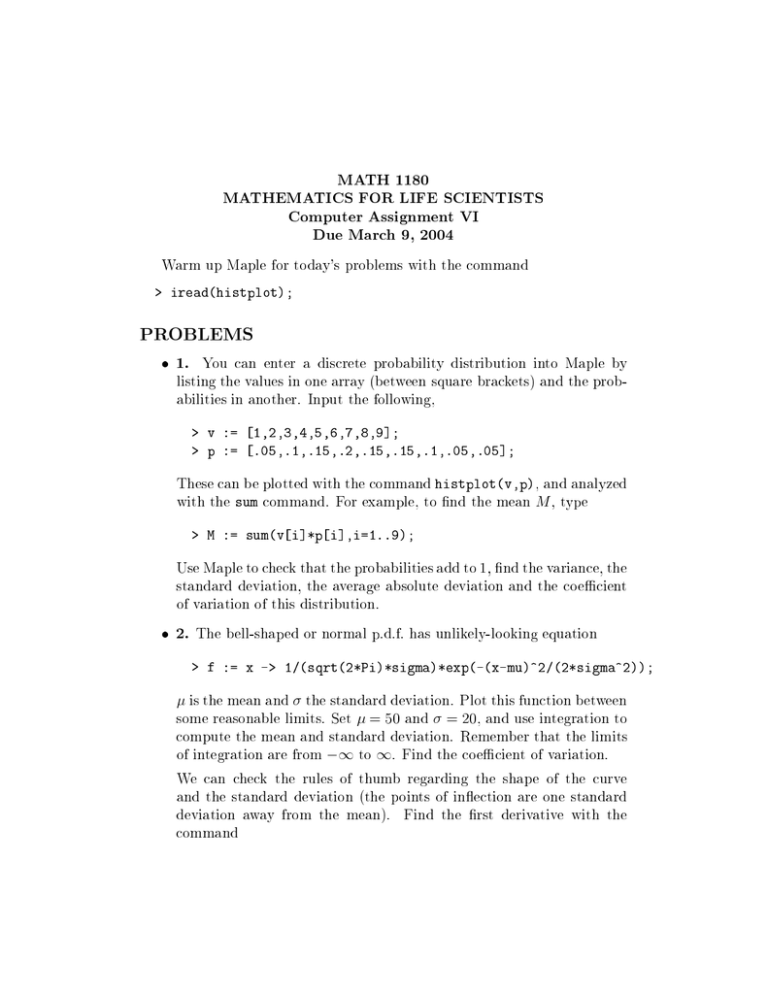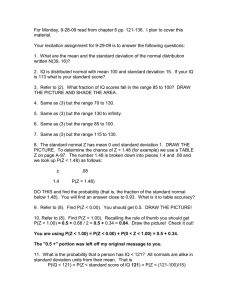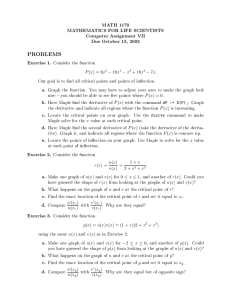MATH 1180 MATHEMATICS FOR LIFE SCIENTISTS Computer Assignment VI Due March 9, 2004
advertisement

MATH 1180 MATHEMATICS FOR LIFE SCIENTISTS Computer Assignment VI Due March 9, 2004 Warm up Maple for today's problems with the command > iread(histplot); PROBLEMS 1. You can enter a discrete probability distribution into Maple by listing the values in one array (between square brackets) and the probabilities in another. Input the following, > v := [1,2,3,4,5,6,7,8,9]; > p := [.05,.1,.15,.2,.15,.15,.1,.05,.05]; These can be plotted with the command histplot(v,p), and analyzed with the sum command. For example, to nd the mean M , type > M := sum(v[i]*p[i],i=1..9); Use Maple to check that the probabilities add to 1, nd the variance, the standard deviation, the average absolute deviation and the coecient of variation of this distribution. 2. The bell-shaped or normal p.d.f. has unlikely-looking equation > f := x -> 1/(sqrt(2*Pi)*sigma)*exp(-(x-mu)^2/(2*sigma^2)); is the mean and the standard deviation. Plot this function between some reasonable limits. Set = 50 and = 20, and use integration to compute the mean and standard deviation. Remember that the limits of integration are from ?1 to 1. Find the coecient of variation. We can check the rules of thumb regarding the shape of the curve and the standard deviation (the points of inection are one standard deviation away from the mean). Find the rst derivative with the command > df := unapply(diff(f(x),x),x); Solve for the maximum. Use a similar command to nd the second derivative and solve for the points of inection (where the second derivative is 0). Do they match the rules of thumb? Find and graph the cumulative distribution F associated with f . Compute the percentiles associated with points 1 and 2 standard deviations above and below the mean. Mark these on your graph. How well do they match the rules of thumb? Use the fsolve command to nd the 5th and 95th percentile and the lower and upper quartiles.





